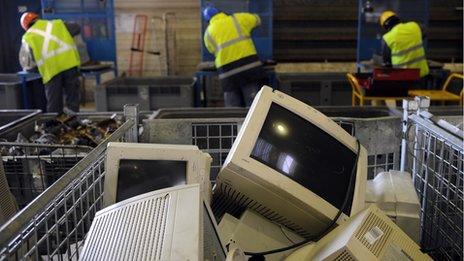Norway uses waste as eco-friendly fuel
- Published
Matthew Price looks round one of Norway's waste to energy plants
Forget coal, oil, shale gas, even nuclear. The bin bag - full of your household waste - is becoming one of Norway's fuels of choice.
Try to imagine the smell when a bin lorry passes you on the street on a hot summer's day. Breathe it in through your nostrils. Stinks, doesn't it? Now multiply it by a thousand.
That's what it is like inside the largest energy recovery facility in Norway, the Klemetsrud plant. A vast concrete hall of waste. Tens of thousands of tonnes of rubbish piled up. The conveyor belts clunk and clank as more pours in. Bin lorries reverse towards the chutes and tip out more plastic bags of waste.
A huge industrial claw swoops down, its pincers reaching round a tonne of rubbish, picking it up and transporting it to the other end of the hall, where it is dropped. A cloud of white dust builds, and soon fills the hall. It is not good to stay in here too long.
This is where the waste thrown out by millions of households from Norway, Britain and elsewhere is turned into heat and electricity for the city of Oslo.
Cheap heating
The rubbish is pre-sorted. Everything that can be recycled is meant to have been taken out, but even then they are still left with more than 300,000 tonnes a year.
They do not see it as waste here - they see it as energy.
"Four tonnes of waste has the same energy content as one tonne of fuel oil," says the director of the waste-to-energy agency in Oslo, Pal Mikkelsen.
"That means a lot of energy, and we use very little energy to transport it."
One tonne of fuel oil, Mr Mikkelsen says, could heat a house for half a year. In other words, take just part of an English bin lorry's maximum load picked up on the streets of Leeds or Bristol, turn it into energy here - and you can heat a home in Oslo for half a year.
The process is simple. The waste, tonne by tonne of it, is dropped into an incinerator. It soars to 850 degrees. Peeking through a small porthole of toughened glass, the fire burns bright orange with a fierce roar of flames.
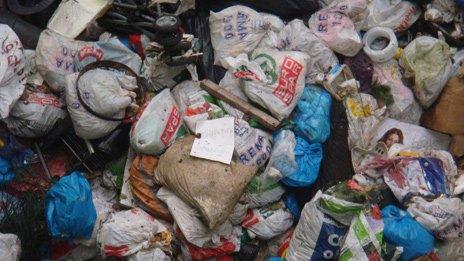
Most of the waste is burned, but some can be recycled
Greener schools
Not everything is burned. Old tin cans and some mattress springs are left. At the end of the process they are left with ash, metal -which is recycled - and a lot of heat.
The heat boils water. The steam drives a turbine, which produces electricity. And the scalding water is piped off from the plant, to houses and public schools across Oslo.
Which means at Bjoernholt School the technical manager, Agnar Andersen, does not have to worry about fuel deliveries during the harsh Norwegian winter any more.
"We don't have to think about fuel oils or fossil fuels. They are phasing out the last school this year with fossil fuels."
At full capacity the plant will provide all the heat and electricity for Oslo's schools and heat for 56,000 homes.
An environmentalist's dream, you might have thought. Not necessarily, cautions the chair of Friends of the Earth Norway, Lars Haltbrekken.
"The overall goal from an environmental perspective should be to reduce the amount of waste, reuse what we can reuse, recycle, and then the fourth option is to burn it and use the energy.
"We have created such an overcapacity in these power plants in Norway and Sweden. We have made ourselves dependent on producing more and more garbage."
Send us your rubbish
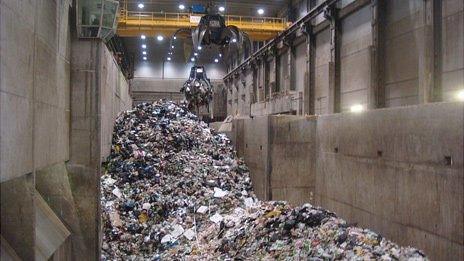
Norway burns rubbish to get energy - and avoids resorting to landfill
Supporters disagree, and point out that, used together, all of Europe's current waste-to-energy plants could only consume about 5% of the continent's total annual landfill. Norway - they say - is actually helping to dispose of some of that waste in the best way possible.
That is certainly true in the case of the English cities Leeds and Bristol. Both export waste to Oslo. Rather than pay for it to go into landfill after the recyclable bits have been removed, they actually pay Oslo to take it off their hands.
So, Oslo is paid to dispose of the rubbish, and gets energy out of it as well.
The waste-to-energy revolution can also be heard on the streets of the Norwegian capital, as the number 144 bus rumbles past.
It is powered by biogas, created from the city's decaying organic matter. One kilogramme of food waste produces half a litre of fuel. Use all of the organic waste they have and they will be able to power 135 buses year-round in Oslo.
If this whole project were repeated across Europe, Pal Mikkelsen believes it would make a huge difference.
"I think it would mean we get a lot better level of self-sustainability when it comes to energy. If it's done properly it would also mean a lot more materials recovery. And a sharp decrease in the landfill."
With tight controls to clean up the gases from the burning, Oslo believes converting waste into energy will help it to halve its carbon dioxide (CO2) emissions within 20 years - making a city, whose wealth was built on oil, one of the greenest on the planet.
- Published28 March 2023
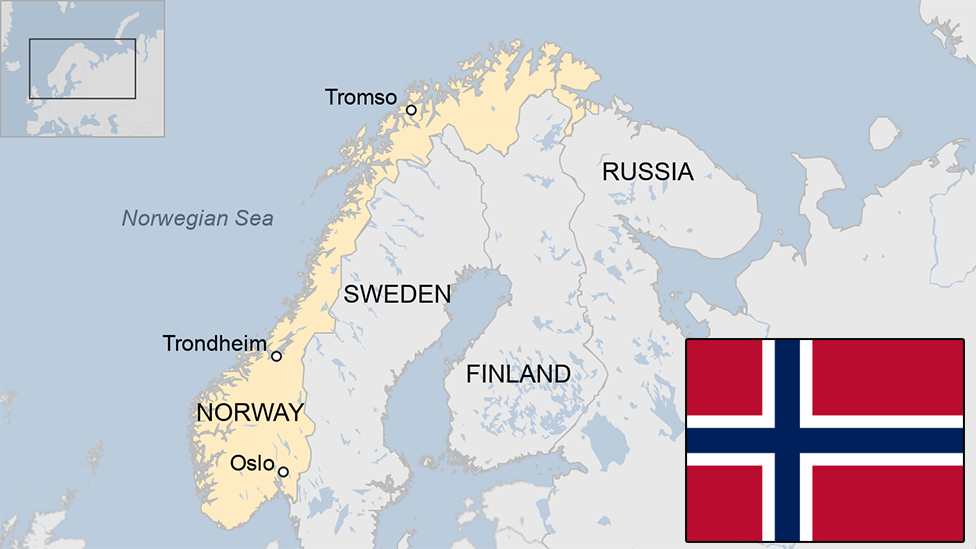
- Published20 September 2013
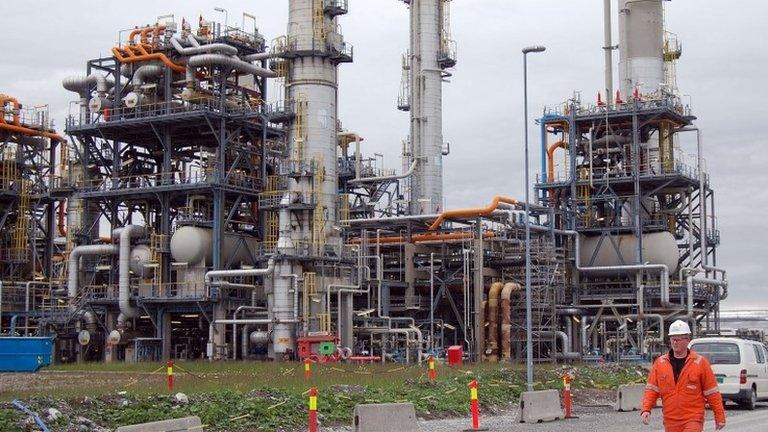
- Published19 January 2012
